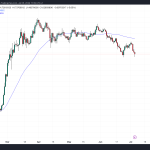The US Dollar has been on a downward trend for the fourth consecutive day this week, with the US Dollar Index briefly falling below 105.00 at the start of the European trading session. The Swiss Franc and Japanese Yen are gaining ground against the Greenback, possibly due to traders reducing their exposure ahead of the US Employment Report. All eyes are on the US economic front as the US Jobs Report for June is expected to be released soon, with high anticipation among investors.
The UK Labour Party’s victory and the upcoming French election news are dominating the headlines, with Keir Starmer set to become the next resident of 10 Downing Street. In France, recent polls indicate that the far-right National Rally party of Marine Le Pen is not likely to gain a majority. The US Employment Report for June, scheduled to be released at 12:30 GMT, is expected to show a decline in Nonfarm Payrolls to 190,000 from 272,000, with various estimates ranging from 140,000 to 237,000. Market reactions are likely to be severe based on the actual numbers.
At 15:00 GMT, the Fed’s Monetary Policy Report is set to be released, providing insights into the state of the US economy and potential future monetary policy decisions. Asian stocks closed the week in negative territory, while European equities saw gains following the UK election outcome. The CME Fedwatch Tool is indicating a high probability of a rate cut in September, despite recent comments from Fed officials. The US 10-year benchmark rate is trading at 4.33%, with a fresh weekly low recorded.
The US Dollar Index (DXY) is facing technical challenges as it falls to fresh weekly lows and tests the critical 105.00 level. Traders may be reducing their Greenback exposure in anticipation of the US Nonfarm Payrolls release, leading to a potential correction in the DXY. Resistance levels lie at 105.20, 105.53, and 105.89, while support levels at 104.77 and 104.44 are crucial in preventing further declines. The daily chart of the US Dollar Index paints a picture of the currency’s current position in the market.
In the realm of financial markets, the terms “risk-on” and “risk-off” play a significant role in determining investor sentiment and market movements. During a “risk-on” market, investors are optimistic and willing to take on more risk, leading to rises in stock markets, commodities, and certain currencies. Conversely, a “risk-off” market sees investors moving towards safer assets such as government bonds, Gold, and safe-haven currencies like the Japanese Yen, Swiss Franc, and US Dollar. Understanding these dynamics is crucial for investors navigating the ever-changing market landscape.
In conclusion, the US Dollar’s recent retreat, coupled with upcoming economic reports and geopolitical events, is creating a volatile environment for traders. The outcome of the US Employment Report and the Fed’s Monetary Policy Report could have a significant impact on the currency’s direction. As investors weigh the risks and opportunities in the market, understanding the concepts of risk-on and risk-off can help guide decision-making. Overall, staying informed and being prepared for potential market reactions is key in navigating the current financial landscape.











